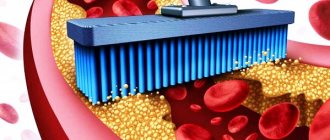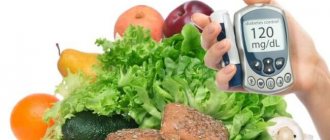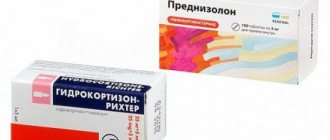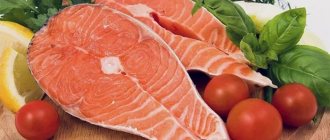Poor circulation can cause unpleasant symptoms such as pain, muscle spasms, numbness, digestive problems, and cold hands or feet (, , , , ).
In addition to those with poor circulation, athletes and physically active people may want to increase circulation to improve physical performance and recovery.
Although circulation problems are often treated with medications, eating certain foods can also improve blood flow.
Here are 14 of the best foods to improve blood circulation.
Products to improve blood circulation in the legs, pelvis, limbs, brain, etc.
Cayenne pepper
Cayenne pepper has a fiery taste due to a phytochemical it contains called capsaicin.
Capsaicin promotes blood flow to tissues by lowering blood pressure and stimulating the release of nitric oxide and other vasodilatory compounds ().
Vasodilators allow blood to flow more easily through your veins and arteries by relaxing the tiny muscles found in the walls of these blood vessels.
Research shows that consuming cayenne pepper increases blood circulation, improves the strength of blood vessels, and reduces the formation of cholesterol plaques in your arteries ().
Moreover, these hot peppers are often included in pain-relieving creams because they can stimulate blood circulation in the affected areas ().
Exercises to improve blood circulation
Since restoring impaired blood circulation in the legs is a long process, you will not see the first results soon. You can achieve a faster effect if you additionally perform a set of simple exercises.
Exercise No. 1.
It is performed while sitting with your arms spread to the side. Lean forward while clasping your left leg with your hands. Straighten up, raising your left knee towards your chest. Return to the original position and repeat the exercise, changing legs.
Doctor's advice
Amlodipine and Pentoxifylline reduce blood pressure and are taken under daily supervision. Actovegin and Solcoseryl improve oxygen supply to tissues and help accelerate wound healing. The main indication for use is trophic ulcers with varicose veins and diabetes mellitus. If blood circulation is impaired due to atherosclerosis of the vessels of the legs, then venotonics are considered the optimal means. In the case of diabetes mellitus, as the cause of decreased blood flow in the legs, the basis of therapy is aimed at correcting glucose levels and taking medications such as Octolipen and Milgamma.
Victoria Druzhikina Neurologist, Therapist
Exercise No. 2.
Performed sitting with hands clasped under the hips. Using your hands, lift your hips with your feet on your toes. Relax, lower your feet to the floor. Repeat several times.
Exercise No. 3.
Performed while sitting. Lean forward, grasping the shin of your left leg. Shift your weight to your right buttock as you lift your bent leg, then straighten it. Repeat with the other leg.
Exercise No. 4.
Performed sitting with knees apart and feet shoulder-width apart. Squeeze your hips and bring your knees together. Return to the previous position and repeat several times.
Exercise No. 5.
Performed while sitting using a gymnastic bandage. Throw the bandage over your feet, straighten your legs, and take the ends of the bandage in your hands. Straighten your feet, trying to stretch the bandage.
Exercise No. 6.
Place a gymnastic bandage on the foot of your left leg, straighten your legs. Pull the bandage, lifting your leg, move it to the side and return to its previous position. Repeat, changing legs.
Exercise No. 7.
It is performed while sitting with your hands on your knees. Using your arms, move both legs to the left side. Return to your previous position and move your legs to the right. Repeat.
Pomegranate
Pomegranates are a juicy, sweet fruit particularly rich in polyphenolic antioxidants and nitrates, which are powerful vasodilators (vasodilators).
Consuming pomegranate in the form of juice, raw fruit, or supplements can improve blood circulation and oxygenation of muscle tissue, which can especially help physically active people.
In a study of 19 physically active people, it was found that consuming 1,000 mg of pomegranate extract 30 minutes before exercise increased circulation, blood vessel diameter, and physical performance ().
Another study found that consuming 500 ml of pomegranate juice daily during or before strength training reduced muscle soreness, damage and inflammation in elite weightlifters ().
Onion
Onions are an excellent source of flavonoid antioxidants, which benefit heart health.
This vegetable improves blood circulation by helping your arteries and veins dilate as blood flow increases.
In a 30-day study of 23 men who received 4.3 grams of onion extract daily, there was a significant improvement in blood circulation and arterial dilation after eating ().
Onions also have anti-inflammatory properties that can improve circulation and heart health by reducing inflammation in the veins and arteries ().
Cinnamon
Cinnamon is a warming spice that has many benefits, including improving blood circulation.
In animal studies, cinnamon improved blood vessel dilation and blood flow in the coronary artery, which supplies blood to the heart.
Rats given 200 mg/kg of cinnamon bark extract daily for eight weeks showed improvements in cardiac function and coronary artery blood flow after exhaustive exercise compared to rats in the control group ().
Additionally, research shows that cinnamon can effectively lower blood pressure in people by relaxing blood vessels. This improves blood circulation, and keeps your heart healthy ().
In a study of 59 people with type 2 diabetes, 1,200 mg of cinnamon per day reduced systolic blood pressure (top reading) by an average of 3.4 mmHg. Art. in 12 weeks ().
Balanced diet
Nutrition to improve blood circulation in the brain is based on several rules, the observance of which is mandatory. Then the diet will really help. This will be noticeable both in general well-being and in parameters of mental activity. Proper nutrition will keep all indicators normal, improve metabolism, and the effect is no less than that of taking medications. The sooner a person realizes the need to balance their diet, the greater the chance of maintaining a youthful brain. The main parameters of the body that you should pay attention to when creating a diet:
- Blood cholesterol level.
- Glucose level.
- Blood pressure during the day.
Already focusing on indicators, you need to choose or limit products.
- Do not overuse salt if you have high blood pressure.
- If your cholesterol is high, limit your intake of animal fat.
- Eat less fast carbohydrates (sweets and baked goods).
- Introduce into your diet foods that prevent increased blood clotting.
In addition, you will need to monitor your drinking regime. Be sure to drink at least 1.5 liters of water per day. It should be drinking, boiled or mineral water without gases, flavors and additives.
Garlic
Garlic is well known for its beneficial effects on circulation and heart health.
Research shows that garlic—particularly its sulfur compounds, which include allicin—can increase tissue circulation and lower blood pressure by relaxing blood vessels.
In fact, diets high in garlic are associated with better flow-mediated vasodilation, an indicator of circulatory efficiency.
In a study of 42 people with coronary artery disease, those who consumed garlic powder tablets containing 1,200 mg of allicin twice daily for three months experienced a 50% improvement in arm artery blood flow compared to the placebo group () .
What will only harm
It is useful to know which foods improve cerebral circulation, but it is also recommended to study the list of harmful components for this process. First of all, it's alcohol. It should not be used at all.
Any quantity and strength negatively affects the health and functioning of the brain. Every holiday with alcohol leads to the death of millions of brain cells. This does not take into account the effects on other organs, such as the liver, kidneys, stomach, heart. In addition, you should exclude from the diet:
- Marinades and homemade preparations. They usually lead to high blood pressure due to the high content of salt and other preservatives.
- Fatty food. Leads to the formation of cholesterol and plaques that clog blood vessels. In addition, fatty foods slow down the functioning of all neurons in the brain, which negatively affects mental performance.
- Any products with a high content of “chemicals”. All unnatural dyes, sweeteners, and preservatives negatively affect the quality of blood.
In addition, you should avoid any type of fast food and processed meat.
Fatty fish
Fatty fish such as salmon and mackerel are excellent sources of omega-3 fatty acids.
These fats are especially beneficial for circulation as they promote the release of nitric oxide, which dilates blood vessels and increases blood flow ().
Omega-3 fats also help inhibit the clumping of platelets in your blood, a process that can lead to blood clot formation ().
Moreover, fish oil supplements are associated with a reduction in high blood pressure and improved skeletal muscle circulation during and after exercise.
For example, in a study of 10 healthy men, high doses of fish oil—4.2 grams per day for four weeks—significantly improved blood flow to the legs after exercise ().
Top 10 products
Many common foods contain a set of vitamins, minerals and other beneficial substances that cleanse blood vessels, increase blood flow, improve the functioning of the heart muscle and thereby normalize blood circulation. Such food should prevail on the table of people engaged in mental work.
Fish and seafood
Sea fish and seafood are valuable not only for the presence of animal proteins, which are easily digestible. Even if seafood is consumed only once a week, iodine, Omega 3 organic acid and other beneficial substances have a serious effect on brain activity, since they:
- occurrence prevents blockage of blood vessels;
- cleanse the walls of the arteries from existing cholesterol plaques;
- Omega-3 acids are good for the brain, as they are necessary for cell membranes;
- antioxidants prevent the oxidation of brain fat cells, that is, prolong their youth and prevent destruction;
- prevent the development of Alzheimer's disease and other manifestations of dementia;
- improve all mental operations by helping the passage of electrical impulses in the brain.
All these food products are indispensable for those who are focused on intellectual work , who have to remember and process a large amount of information, who already have manifestations of atherosclerosis and cerebrovascular accidents.
Oatmeal
All whole grain cereals are beneficial for cerebral circulation in one way or another. They have a rich composition of minerals, they contain vitamins, vegetable proteins, which help maintain the correct composition of the blood and the normal state of the bloodstream.
But oatmeal is especially useful as a remedy that helps with poor blood circulation in the brain.
Regular consumption of porridge made from this cereal has a beneficial effect on brain function and the state of the cardiovascular system.
Tomatoes
This vegetable contains vitamins, minerals, pectins, sugars, and organic acids. But its most important advantage is the presence of lycopene. This is a carotenoid that has a unique property: it can break down fats.
Lycopene is also an excellent antioxidant that actively:
- destroys free radicals, that is, fights aging;
- improves cholesterol metabolism;
- increases the permeability of the bloodstream, preventing the formation of blood clots and blood clots;
- strengthens arteries, veins and capillaries;
- normalizes the activity of brain cells, saturating them with oxygen.
It is noteworthy that lycopene from tomatoes not only improves blood circulation and prevents the appearance of atherosclerosis, but also reduces the risk of cancer problems many times over. Just two tomato dishes a week - and the likelihood of cancer is reduced by 30-35%. And two glasses of tomato juice a day for 1-2 weeks will significantly improve the condition of blood vessels.
Lycopene not only is not destroyed by heat treatment, but by changing its formula, it is even 2.5 times better absorbed than from raw tomatoes. Especially in tomato pastes and salads such as lecho with the addition of vegetable oil.
Garlic
Vitamins, minerals, organic acids, phytoncides, phytosterols, bioflavonoids have a very wide spectrum of action and are equally highly valued.
Garlic is especially useful for the brain because it contains selenium and, after grinding, produces allicin, a substance that imparts a specific bitterness and has a positive effect on:
- quality blood composition;
- blood thinning, dissolution of clots, cholesterol and other deposits on the walls of blood vessels;
- elasticity of vascular walls;
- improved blood circulation, including in brain tissue.
You can also make medicinal tinctures from garlic. Detailed recipes here.
Cabbage
White, cauliflower, red, Brussels sprouts, and broccoli are equally suitable for the brain. Phosphorus, calcium, other minerals and vitamins, polyphenols in cabbage:
- have a positive effect on the composition of the blood, reduce its fluidity;
- cleanse the blood and blood vessels, improving blood circulation;
- strengthen the walls of arteries and veins;
- normalize heart rhythms and stimulate blood flow.
Greens, leafy salads
Lettuce, spinach and almost all greens are known primarily for their high content of vitamin C. This is the best antioxidant, without which no organ can be healthy, especially the brain.
Its blood circulation also improves thanks to:
- calcium , which regulates blood viscosity, increasing its fluidity and preventing clots from forming;
- essential oils , microelements that normalize blood circulation in all types of vessels.
All kinds of greens should be present in the diet in abundance. One serving of lettuce per day for two to three weeks - and you will notice how chronic fatigue goes away, attention increases and memory becomes stronger. For other brain-healthy fruits and vegetables, see a separate article.
Grape
Berries are one of the first places among foods beneficial for cognitive functions. But grapes contain a special polyphenol - epicatechin.
Grapes are extremely beneficial for the blood vessels of the brain. Both black and red grapes are beneficial.
In addition, the large amount of antioxidants in it makes grapes a must-have product in the diet of those for whom mental performance is important.
Unrefined vegetable oils
Unrefined, directly pressed oils are one of the most essential products for the brain.
They contain vital fatty acids that help the brain by:
- regulate the production of “bad” cholesterol by the liver;
- cleanse blood vessels from cholesterol plaques;
- renew the blood and maintain its correct composition.
Only unrefined vegetable oil can benefit the circulatory system and brain cells. Unrefined cold-pressed oil is ideal as a health product: it retains the maximum of substances beneficial to blood vessels and cell membranes.
bitter chocolate
Dark and bitter chocolate is one of the best ways to increase brain activity.
This product contains lecithin, theobromine, epicatechin, flavonoids and a large amount of fast carbohydrates, which, when consumed, instantly provide a lot of energy and increase intelligence. In addition, chocolate:
- dilates blood vessels in the brain;
- accelerates the thought process, improves the quality of other functions of the thinking organ;
- relieves vascular spasms, relieving headaches;
- helps the production of endorphins and serotonin, improving mood;
- eliminates symptoms of fatigue and overwork, compensates for the effects of lack of sleep.
The slightly bitter delicacy quickly tones up, increases attentiveness and concentration. People whose profession requires attentiveness, quick reaction, and good memory should always have it on hand as an emergency aid.
Nuts
Omega-3 and Omega-6 fatty acids, vitamins, especially vitamin E, and vegetable protein make nuts a very valuable product that improves brain activity.
Regularly eating a small handful of peanuts, hazelnuts, cashews, sesame seeds, pistachios, walnuts or almonds will help:
- thin the blood, preventing clots from forming in it;
- tone brain cells, giving them a lot of energy;
- slightly expanding the arteries, moving the blood flow of the required force;
- normalize cholesterol metabolism by regulating the production of “bad” cholesterol;
- improve function and enhance natural brain activity.
You can eat nuts with honey.
Also check out the infographic:
Now let's talk about foods that are harmful to normal blood circulation.
Beet
Many athletes drink beet juice or take beet powder to improve physical performance.
This is because beets contain high levels of nitrates, which your body converts into nitric oxide. Nitric oxide relaxes blood vessels and increases blood flow to muscle tissue.
Beet juice supplements improve oxygen flow to muscle tissue, stimulate circulation, and increase nitric oxide levels - all of which can improve physical performance ().
In addition to helping athletes, beets improve blood circulation in older people with circulatory problems.
In a study of 12 older adults, those who drank 140 ml of fresh beet juice per day experienced significant reductions in blood pressure, clotting time and blood vessel inflammation, compared to those who consumed a placebo ().
Symptoms of poor circulation
As we already mentioned, low temperature and tingling sensations are the most well-known symptoms of poor circulation in the arms and legs. Here are a few more:
- Numbness in arms and legs.
- Pain and cramps in the arms and legs.
- Swelling in the legs.
- Slow healing of ulcers on the arms and legs.
- Loss of sensation in the limbs.
- Migraines and headaches.
- Blueness of fingers and nails.
- The appearance of varicose veins.
- Itching in the arms and legs.
- Cramps of the gluteal muscles and legs.
- Loss of strength in arms and legs.
- Difficulty walking.
- Dizziness when standing up.
Turmeric
Improving blood circulation is one of the many benefits of turmeric.
In fact, both Ayurvedic and Traditional Chinese Medicine have used turmeric to dilate blood vessels and improve circulation since ancient times ().
Research shows that a compound found in turmeric called curcumin helps increase nitric oxide production, reduce oxidative stress, and reduce inflammation.
In a study of 39 people, taking 2,000 mg of curcumin per day for 12 weeks resulted in a 37% increase in blood flow in the forearm and a 36% increase in blood flow in the upper arm ().
Green leafy vegetables
Green leafy vegetables such as spinach and greens are rich in nitrates, which your body converts into nitric oxide, a powerful vasodilator.
Eating nitrate-rich foods can help improve circulation by widening blood vessels and allowing your blood to flow more easily.
In a study of 27 people, those who consumed nitrate-rich (845 mg) spinach daily for seven days experienced significant improvements in blood pressure and circulation compared to the control group ().
What's more, studies have shown that people who eat a traditional Chinese diet, which includes nitrate-rich vegetables such as Chinese cabbage, have lower blood pressure and a significantly reduced risk of developing cardiovascular disease compared to those who eat a typical Western diet ( ).
Citrus fruit
Citrus fruits such as oranges, lemons and grapefruit are rich in antioxidants, including flavonoids.
Consuming flavonoid-rich citrus fruits can reduce inflammation in your body, which can reduce blood pressure and stiffness in your arteries while improving circulation and nitric oxide production ().
In a study of 31 people, those who drank 500 ml of orange juice per day for one week had significant improvements in artery dilation and significant reductions in inflammatory markers such as IL-6 and CRP compared to the control group ().
Additionally, regular consumption of citrus fruits, such as lemon and grapefruit, is associated with lower blood pressure and a reduced risk of stroke (,).
Walnuts
Walnuts are rich in beneficial compounds such as L-arginine, alpha lipoic acid and vitamin E, which stimulate the production of nitric oxide.
Eating walnuts may lower blood pressure, improve blood vessel function, and reduce inflammation, which may be especially beneficial for people with diabetes ().
People with diabetes often have circulatory problems and high blood pressure due to damage to blood vessels caused by uncontrolled blood sugar levels ().
In a study of 24 people with diabetes, those who consumed 56 grams of walnuts per day for eight weeks experienced significant improvements in blood flow compared to the control group ().
Other Important Recommendations
Organizing the correct nutrition for the cardiovascular and circulatory system will help normalize cerebral circulation. But there are many additional ways to help the body improve the supply of oxygen and nutrients to brain cells.
- Physical activity and sport. Without a sufficient amount of physical activity, it is impossible to maintain normal functioning of the heart muscle and maintain normal blood circulation. The brain primarily senses a lack of oxygen and nutrients when normal blood flow is disrupted.
- Massage of the collar area and the whole body. A sedentary lifestyle and the occurrence of osteochondrosis have a very negative impact on well-being and mental activity. Massage, and even self-massage, can greatly ease things by increasing blood flow to the brain.
- Walks in the open air. An additional flow of oxygen into the blood, combined with walking, improves blood circulation and supply to the brain.
- Ventilation of premises. In a closed room, the amount of oxygen is insufficient. This creates additional problems in the access of oxygen to brain cells. Ventilation alleviates this problem to some extent.
- Convenient workplace. When working sedentarily, it is especially important that the chair is as comfortable as possible, allowing you to occupy a physiologically comfortable position that does not interfere with blood flow.
- Sleep hygiene. During a night's rest, it is important to create conditions for complete relaxation in a comfortable position. This will help not to disrupt the blood circulation in the brain.
- Sufficient fluid intake. Blood that is too thick has difficulty passing through the bloodstream. First of all, the brain suffers from dehydration, which, moreover, consists of 80% water. Drinking at least 2 liters of fluid per day will help avoid dehydration and poor circulation.
Tomatoes
Tomatoes may help reduce the activity of angiotensin-converting enzyme (ACE), which causes blood vessels to constrict to control blood pressure ().
Research shows that tomato extract works similarly to ACE inhibitors - dilates blood vessels and improves circulation.
Test-tube studies note that tomato extract may inhibit ACE, reduce inflammation, and inhibit platelet aggregation, which may improve blood circulation (, ).
Cold compresses and ice pack
When applying a cold compress, as a result of local cooling, a spasm of the blood vessels of the skin and internal organs adjacent to this area occurs, which is accompanied by a limitation of inflammation and traumatic swelling of the tissues, and a decrease in bleeding. Wet cold compresses (lotions) are used in the first hours for bruises, nosebleeds, hemorrhoids, and high fever. In this case, a piece of soft cloth rolled up in several layers, moistened with cold water, is applied to the corresponding area - forehead, bridge of the nose, etc. Since a wet cold compress quickly reaches body temperature, it must be changed every 2-3 minutes.
For longer local cooling, it is more convenient to use an ice pack, which is a flat rubber bag with a wide hole filled with small pieces of ice. An ice pack is used for internal bleeding, such as ulcerative bleeding, when delirium appears against the background of a feverish state, and in the initial stage of some acute diseases of the abdominal organs. Considering that an ice pack provides more pronounced cooling than a cold compress, it is advisable not to apply it to the body to avoid hypothermia, but to hang it (over the head, stomach, etc.), taking ten-minute breaks every half hour.
Berries
Berries are particularly beneficial for health - they have antioxidant and anti-inflammatory properties, which can have a positive effect on blood circulation.
Chronic inflammation can damage blood vessels and raise blood pressure, which can cause circulation problems.
Research shows that eating berries may reduce blood pressure, heart rate, platelet aggregation and levels of inflammatory markers in the blood such as IL-6, as well as improve the dilation of arteries ().
What will help with blood circulation problems?
The most common result of persistent dysfunction in the circulatory system of the brain is a stroke. But after stopping the acute period with the help of nutrition, an adult may well recover. To do this, it is necessary to introduce into the patient’s daily diet:
- Orange and dark green vegetables.
- Legumes in any form. This could be peas, beans, especially green beans.
- Fruits in any form, including frozen and dried.
- Whole grain products. First of all, bread.
All products that improve blood circulation in the brain will have an additional effect and optimize the effect of prescribed medications and speed up recovery.
Any organ needs a full blood supply in order to function normally. Problems with blood vessels, cholesterol, increased blood clotting, as well as defective composition, lead to disruption of the functioning of entire systems. Brain function may also be impaired due to problems with the cardiovascular system or blood. This directly affects indicators such as performance, attention, memory, concentration and energy. In order to turn on your head, sometimes it is enough to change your daily menu.
Ginger
Ginger is a staple medicine used in traditional medicine in India and China for thousands of years. Among its various benefits, ginger can lower blood pressure and improve blood circulation ().
In both human and animal studies, ginger has been shown to reduce high blood pressure, which negatively affects circulation ().
A study that looked at 4,628 people found that those who consumed the most ginger (2-4 grams per day) had the lowest risk of developing high blood pressure ().
Animal studies show that ginger works by inhibiting ACE ().
Symptoms of cerebrovascular accident
When a lesion forms in the brain with impaired blood supply, the patient may experience numbness in half of the body (on the side opposite to the lesion) and part of the face around the lips; short-term paresis of the limbs or other parts of the body and face is possible. Speech is impaired and an epileptic seizure may occur.
If there is a circulatory disorder, depending on the location of the lesion, the legs and arms may become weak, the head may become dizzy, the patient may have difficulty swallowing and pronouncing sounds, photopsia (appearance of luminous spots, sparks, etc. in the eyes) or diplopia (doubling of visible objects) may occur. . The person loses orientation and has memory lapses.
Signs of impaired cerebral circulation due to hypertension are manifested in the following: the head and eyeballs begin to hurt very much, the person experiences drowsiness, he experiences stuffiness in the ears (like on an airplane during takeoff or landing) and attacks of nausea. The face turns red and sweating increases.
Unlike strokes, all these symptoms, which are called “transient attacks,” disappear within 24 hours.
Chronic cerebrovascular accident (CVA), unlike acute forms, develops gradually. There are three stages of the disease:
- At the first stage, the symptoms are vague. They are more like chronic fatigue syndrome. A person quickly gets tired, becomes hot-tempered and absent-minded, and forgets some minor points. His sleep is disturbed, his mood often changes, his head hurts and he feels dizzy.
- At the second stage, chronic cerebrovascular accident is accompanied by significant memory deterioration, and minor motor dysfunctions develop, causing unsteadiness in gait. There is a constant noise in my head. A person perceives information poorly, having difficulty concentrating his attention on it. Becomes irritable and unconfident, loses intelligence, reacts inadequately to criticism, and often becomes depressed. He gradually degrades as a person and adapts poorly socially. He constantly feels dizzy and has a headache. He always wants to sleep. Performance is significantly reduced.
- In the third stage, all symptoms intensify. Personality degradation turns into dementia, memory suffers. Having left home alone, such a person will never find his way back. Motor functions are impaired, which manifests itself in hand tremors and stiffness of movements. Speech impairment and uncoordinated movements are noticeable.
Other methods
While including any of these foods in your diet can improve circulation, other lifestyle changes may have a greater impact.
Here are some other lifestyle changes that can optimize circulation:
- Smoking cessation : Smoking is a risk factor for many chronic diseases such as cancer and can negatively affect blood circulation ().
- Increase physical activity : Physical activity stimulates blood circulation and helps improve the dilation of blood vessels. In addition, regular exercise or other active activities, such as dancing and swimming, reduce the risk of cardiovascular disease ().
- Lose excess body weight : Being overweight or obese negatively affects your blood circulation and can lead to dangerous complications such as the formation of cholesterol plaques in your arteries ().
- Healthy Diet : Instead of just eating certain foods, try switching to a diet rich in healthy, whole foods such as vegetables, healthy fats and fiber-rich foods, which can improve circulation.
- Drinking enough fluids : Proper hydration is critical to all aspects of health, including circulation. Dehydration can damage endothelial cells and promote inflammation in your body by limiting blood flow ().
- Reduce Stress Levels : Research shows that stress levels can significantly affect your blood pressure. Stress control can be achieved through yoga, meditation, gardening, or spending time in nature ().
Summary:
A healthy diet, exercise, losing excess body weight, quitting smoking, drinking enough fluids and reducing stress are natural ways to improve blood circulation.
Vitamins and minerals
Before identifying products to improve blood circulation in the brain, you need to understand exactly what substances and microelements help maintain it in a healthy state:
- Sulfur - helps fill cells with oxygen.
- Glucose provides the brain with energy.
- Phosphorus - helps the formation of neurons.
- Iron is responsible for both the formation of nerve cells and their interaction.
- Calcium - stimulates hematopoiesis.
- Lecithin - lowers the level of “bad” cholesterol in the blood, removes free radicals.
- Iodine - prevents excessive blood thickening and optimizes blood flow.
- Vitamins C, D, E - thin the blood, strengthen the walls of blood vessels, reduce the amount of cholesterol.
- B vitamins are natural antioxidants. In addition to strengthening blood vessels, these substances help improve memory and attention, as well as the speed of interaction between neurons.
- Fatty polyunsaturated acids Omega-3 and Omega-6. In sufficient quantities, they help the formation of new cells, strengthen neural connections and help improve metabolic processes in the cerebral cortex.
- Choline - participates in all chemical processes occurring in the brain.
The diet of a healthy person, both an adult and a child, should contain foods containing all of the listed substances.
Summarize
- There are many natural ways to improve circulation, including choosing foods that stimulate circulation.
- The antioxidants, nitrates, vitamins and other substances found in the above foods can have a positive effect on your circulation.
- Moreover, a healthy lifestyle, abstaining from smoking, physical activity, maintaining a normal body weight and a healthy diet can improve blood circulation and overall health.
The article was prepared by experts for informational purposes only. It should not be used as a guide for treating medical conditions and is not a substitute for professional medical advice, diagnosis, or treatment. In case of illness or any symptoms, you should always consult a doctor and not self-medicate.
Tags: Blood circulation
About the author: Anastasia Sheveleva
Candidate of Medical Sciences, doctor of the highest category, therapist, registered dietitian, nutrition consultant. More about the author.
- Related Posts
- 15 Best Foods to Eat Before Drinking Alcohol
- What is the best time to eat dates?
- Foods high in starch: list
« Previous entry
Other nutritional principles
Not only the diet itself is important for cerebrovascular accidents, but also the principles of proper food consumption. You need to eat often and in small portions. For the brain to work efficiently, you should not overload your stomach. This also applies to various batteries. If you combine different forms of protein, the processing and absorption time of the product increases.
It is important to prepare any product correctly. The ideal option is to steam or boil. If possible, it is better to eat raw vegetables and fruits. For better digestibility, salads must be seasoned with oil - olive or hemp. Any fried foods increase the content of negative cholesterol and accelerate the formation of blood clots in blood vessels.











